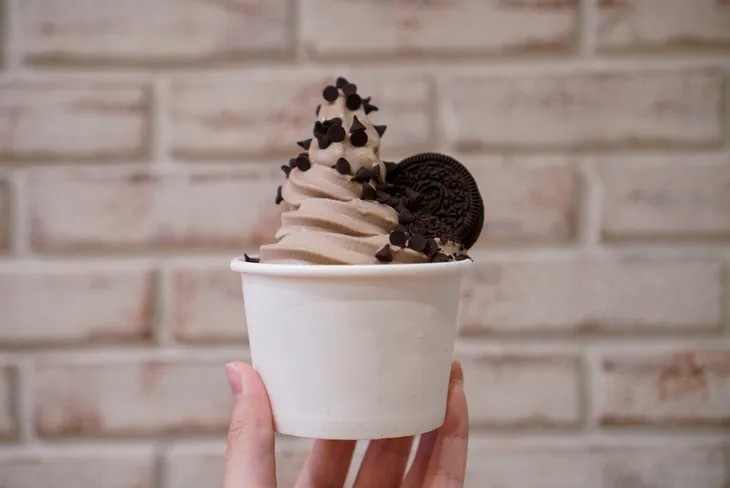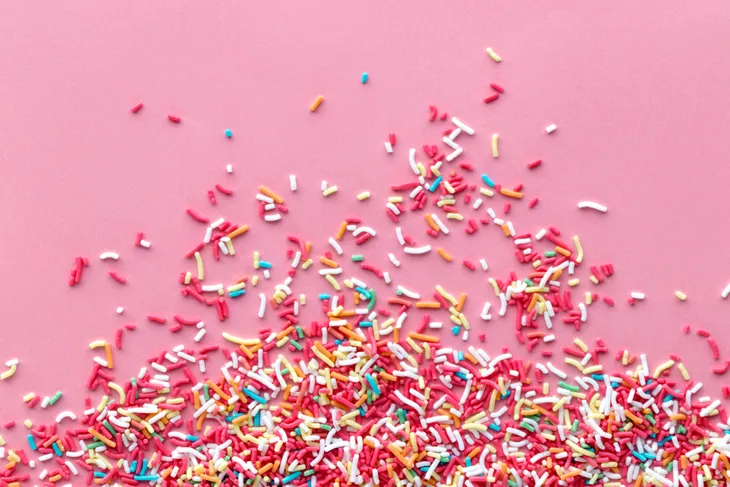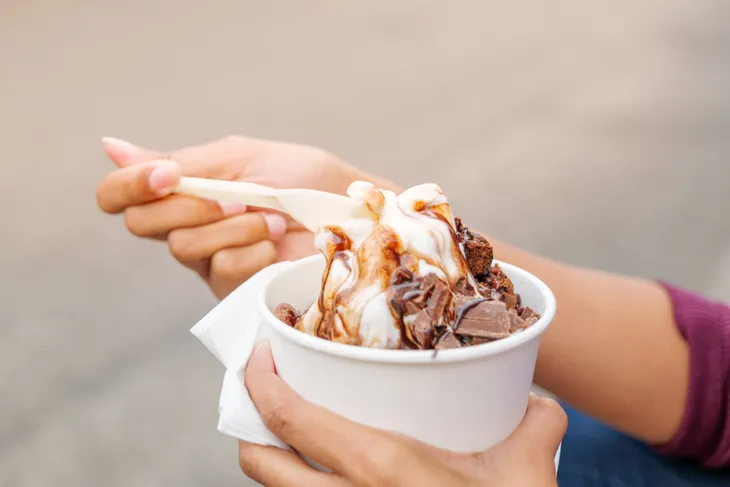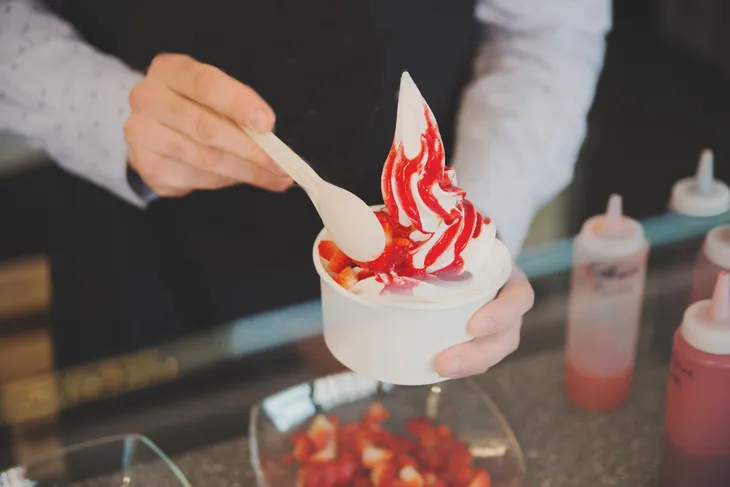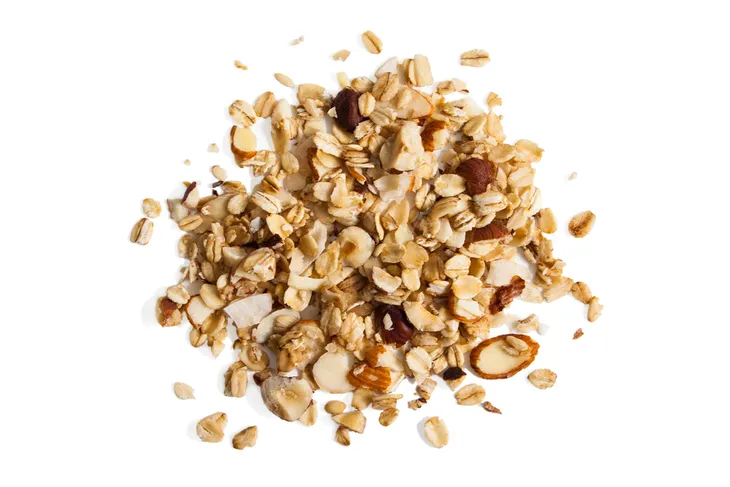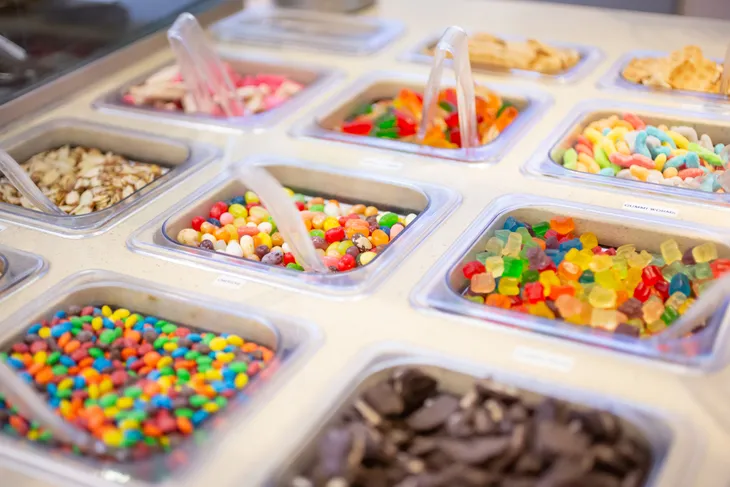You’re on a healthier eating journey yet one humid summer night you’re faced with a group of friends who want to go get ice cream. Maybe you suggest opting or frozen yogurt instead as the healthier alternative. After all, 5-ounces of plain frozen yogurt weighs in at roughly 120-calories compared to the same size in soft-serve ice cream at 220-calories. It’s the extras that can really add up and put you in dangerous, indulgent dessert territory.
Here are six toppings that can quickly turn your healthy-minded fro-yo into a sugar- and fat-riddled ice cream sundae…
Cookie Crumbles
That’s the way the cookie crumbles, and unfortunately, when we reach for froyo topping it usually crumbles in heaps on top of our otherwise low calorie dessert. I know, the texture of crunchy cookie and cool, creamy frozen yogurt is hard to pass by.
However, consider a wee tablespoon (which is approximately the size of a ping pong ball) will get you 71 high calorie crumbles. Not to mention the hydrogenated oils and artificial preservatives in store bought cookies (i.e., Oreos).
Rainbow Sprinkles
Big kids and little kids alike love a splash of color on a stark white fro-yo background. In bright blues, yellows, reds, greens, and oranges a tablespoon of multi-colored sugar bits will make you feel like a kid again.
Just keep in mind that a small tablespoon will cost you approximately 60-calories…and I bet you’ll want more than just one tablespoon. Before you sprinkle consider all of that sugar and artificial dye, and opt for a handful of colorful, fresh berries (i.e., blueberries, raspberries, blackberries, and strawberries) instead.
Chocolate Bar Bits
I consider the chocolate bar bits at my neighborhood frozen yogurt establishment my weakest link. I enter with good intentions when I fill up my 5-ounces of plain fro-yo. However, once my gaze hits the seemingly never-ending array of Skor, Kit Kat, Butterfinger, Reese Peanut Butter Cup, and Health chocolate bar bits I lose my willpower.
Suddenly a tablespoon of those coveted crushed chocolate bar bits (at 100-calories each) have turned by fro-yo into the equivalent of a double fudge sundae. If you can’t resist, do what I do and top your fro-yo with fresh banana slices and a teaspoon of dark chocolate chips (which is about 35-calories).
Fruit Syrups and Sauces
It’s called “fruit” syrup so it must be healthy, right? While the natural fruit it’s made with may very well be healthy, the sugar liquid that surrounds that pureed peach, pineapple, strawberry, or cherry compote is nothing but empty calories.
Not to mention the fact that the berries get their oh-so-red color from artificial food dyes. A mere 2-teaspoon serving of strawberry sauce can equal more than 100-calories and 20-grams of refined sugar. So do your health a favor and opt for fresh berries instead.
Granola
You know the drill when it comes to granola: not all cereals are created healthy. Unfortunately, granola is the main culprit of hidden sugars and trans fats (from hydrogenated oils). So if you’re innocent cup of fro-yo contains just a 1/3-cup portion of granola, suddenly you’ve added 200-calories to your “healthy” treat.
The basis of granola is well-meaning: whole grain oats, raw nuts, and fruit. However, once coated in sugar and oils that make up most store-bought granola concoctions, and all good intentions are thrown out the window. For a satisfying crunch on your fro-yo reach for a small handful of raw nuts instead.
Gummy Candy
Gummy worms, gummy bears, and gummy fish are fun to eat and the package says “fat free.” However, that shouldn’t discount the fact that your favorite gummy candy is loaded with refined sugar and artificial food dye.
I love Gummy Bears on my fro-yo as much as the next person, but this topping is completely devoid of nutritional goodness. Plus, the intention of 3 little bears often ends up being 20 little bears (or 150-calories) on my fro-yo.

